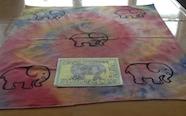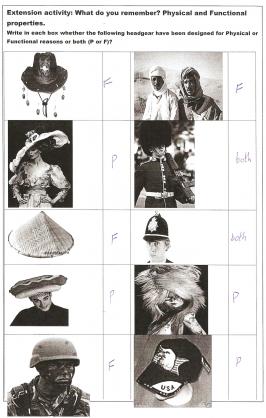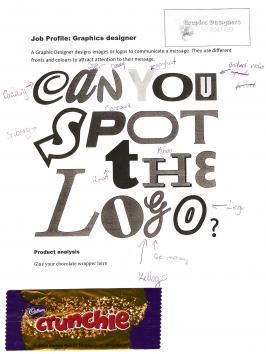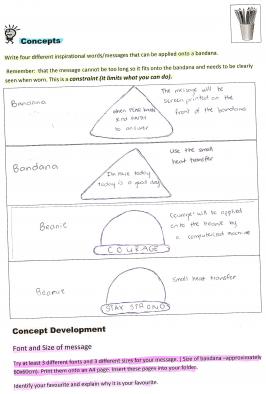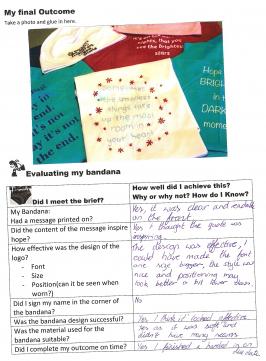Values based learning in technology
Teaching inquiry
How can I develop student understandings of the technological modelling component within a technological practice programme of learning focused on creating appropriate headwear (bandanas and beanies) for cancer patients?
Introduction
Year 9 students at Carmel College created bandanas and beanies for teenagers with cancer. The context meant they could intervene by design and learn about the value of caring for their peers who were sick and vulnerable. Focusing on how they could improve life for the teenagers the students developed headwear that would help regulate temperature. They grew their understandings of brief development, outcome development and evaluation, and technological modelling.
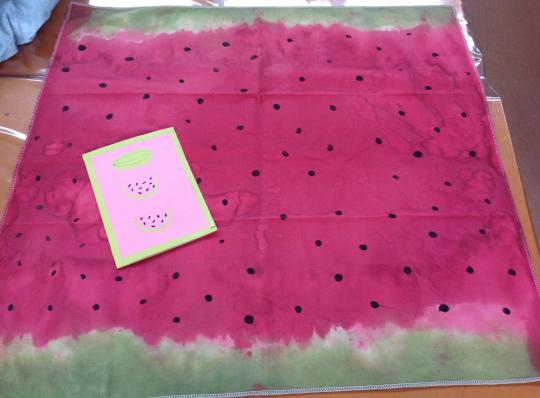
Background
Carmel College is an integrated Catholic school. Each year, as part of its special character, the school has a focus on one of the Sisters of Mercy Core Mercy Values. Technology education is about improving experiences and the environment for all living things by designing outcomes from a place of caring (an equitable, sustainable, and values-based practice) so is an excellent way for the school to achieve values-based learning experiences.
Carmel College also has a school–wide technology curriculum implementation plan. The curriculum focus planned for the year 9 final programme of learning was brief development (to level 4), outcome development and evaluation (level 4), and technological modelling (to level 4).
Look Good Feel Better
The programme of learning was titled Look Good Feel Better – the name of a free service provided for cancer patients. It culminated in students producing an item of headwear for cancer patients. The completed headwear each had a special message printed on them and went in a gift basket given to Look Good Feel Better workshop participants.
Look Good Feel Better describes its role and purpose as follows:
"Look Good Feel Better is a free service offered to women undergoing treatment for cancer. We help restore and enhance the appearance of cancer patients both during and after treatment."
Representatives from Look Good Feel Better were happy to act as stakeholders. They provided information on the organisation and let students know any particular points they would need to consider when creating the headwear. They thought the bandanas and beanies were a great idea for teenagers with cancer – gifts made by teenagers for teenagers.
Developing the brief
Students were given an initial simple brief. Annaliese used this as a starting point to grow their understandings of brief development to level 4.
Students also watched two YouTube clips on the Look Good Feel Better service:
To begin developing the brief, the class discussed their initial ideas for the attributes of headgear that would suit a teenager going through cancer treatment. Annaliese asked – what needs and wants do you think a cancer sufferer has?
Annaliese used a computer-assisted presentation to revisit understandings around the physical and functional attributes of technological outcomes and linked this to the context of headwear.
She was keen to collect student understandings along the way to evaluate the effectiveness of the teaching strategies, so she asked them to look at a range of headgear and identify whether the headgear had been developed for physical or functional reasons or both.
Visiting speaker
Annaliese organised for a representative from Look Good Feel Better to speak to the class. The class had prepared questions to inform the development of their outcomes.
Clare O'Higgins from the Look Good Feel Better Foundation outlined the nature of their work and explained to the students the structure of the organisation and how it relied entirely on donations and fund–raising to operate.
She also explained that they would need to consider the materials, such as fabrics and dyes, that they used in the headwear. The students would need to ensure that the headwear would not irritate the scalp. Similarly, when thinking about construction techniques, they would need to consider whether features such as seam types and finishes would irritate the scalp.
Modelling in practice
Annaliese explored technological modelling with the students through looking at the range of modelling that had been undertaken to develop Yolkr – a product for separating eggs.
The students were asked questions about the type of modelling and what specific evidence was gained about the suitability of the design.
Students were shown a presentation on technological products that outlined a wider range of products.
They explored arguments about both what can be done and what should be done when making decisions in relation to these products.
Modelling the message and design
The students planned to print an inspirational message on the headwear.
Choosing an inspirational message that was uplifting and encouraging was challenging for the year 9 students and created a lot of research and discussion. They searched online for inspirational messages/quotes and found many that were suitable. The students checked their messages out with each other as well as with the teacher.
They then had to decide on the style and colour of the font they would use to apply the message to the headwear. Some students developed images as well as a message.
Annaliese saw this as an opportunity to introduce understandings of the work of a graphic designer. They analysed various fonts used by a graphic designer and were also given a chocolate bar and asked to copy the font on the wrapper to help develop their confidence in drawing.
The students developed the word and images they wanted to screen print onto the headwear, taking into account the size of the finished outcome and deciding where they would position their words and image. Mock-ups of a beanie and a bandana were available for students to check against for the size of printing and images.
Creating a screen is expensive, so the students had to discuss their ideas with the teacher. Once they had agreed on the final design, the teacher created the screen. They initially practiced printing their design on paper.
Making the headwear
The headwear was cut to a specific pattern provided by the Look Good Feel Better organisation. Cotton and cotton knit was sourced for the products. The teachers and students constructed the finished bandanas and beanies. Some students also tie-dyed their fabric prior to printing.
A signed card was developed and provided with each bandana or beanie.
Outcomes
The students successfully produced bandanas and beanies with accompanying cards for the Look Good Feel Better Foundation workshops.
Outcome development and evaluation
Many students met the level 4 indicators for outcome development and evaluation.
Outcome development and evaluation, level 4
- describe design ideas (either through drawing, models, and/or verbally) or potential outcomes
- undertake functional modelling to develop design ideas into a conceptual design that addresses the key attributes
- test the key performance properties of materials/components to select those appropriate for use in the production of a feasible outcome
- produce and trial a prototype of the outcome
- evaluate the fitness for purpose of the final outcome against the key attributes
Technological modelling
From their examination of the Yolkr product, students had also developed some understandings at level 4 of the technological modelling component. They were familiar with a number of methods of modelling in their own practice – drawing, testing their design ideas on paper before printing on the cloth, and discussing ideas with others.
Next time, Annaliese is adding opportunities for students to look at a range of other technologists modelling practices to ensure they have a comprehensive understanding that meets the indicators for this component at this level. She is aware that the technological modelling component requires students to have understandings of modelling that are more than just within their own practice.
Technological modelling, level 4
- explain how functional modelling and prototyping allows for consideration of both what "can" be done and what "should" be done when making decisions
- discuss examples to illustrate how particular functional models were used to gather specific information about the suitability of design concepts
- identify information that has been gathered from functional models about the suitability of design concepts and describe how this information was used
- describe examples to illustrate how prototypes were tested to evaluate a technological outcome’s fitness for purpose
- identify information that has been gathered from prototyping and describe how this information was used.
Core Mercy Value
The students grew their understanding of the Core Mercy Value of caring for others by designing outcomes that improve the situation for others. The values based need of teenagers designing outcomes to help other local teenagers in need, was an authentic, and local context for learning to be engaging and meaningful.
Using external experts as stakeholders, Claire Higgins from Look Good Feel Better, supported student’s thinking, generating concepts, and decision-making for creating suitable headwear. These outcomes created a feeling of support and care from a wide community perspective whilst demonstrating to the students that they can make a difference in the world around them.
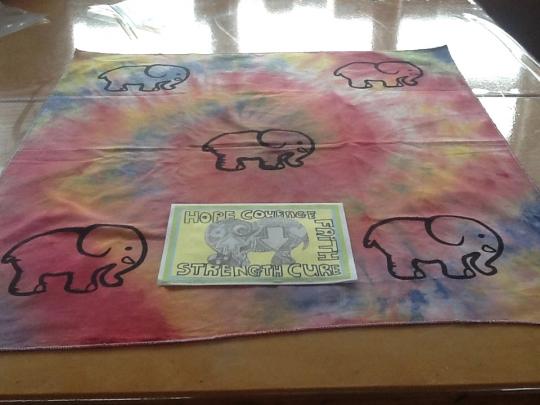
What next?
Annaliese plans to revise evidence requirements and trial further teaching and assessment strategies to match the indicators at level 4 for the technological modelling component.
Teachers within the faculty are also planning to provide students with a tracking system that can be used throughout the department. Students will be able to see how their understanding is progressing in the technology strands. Teachers want to show students how they are working towards having a sound foundation of technology understanding that is needed for their futures.

